Page 1 of 2


Review: HD 4870 GDDR5 leaves quite an impression
The day has finally come when ATI is ready to introduce the full power of its RV770 chip. As we've said many times before, RV770 is a DirectX 10.1 chip developed in 55nm with 965 million transistors and most importantly, with support for GDDR5 memory. It’s also important to mention that RV770 has 800 stream processors, 40 texture units and 16 render back ends.
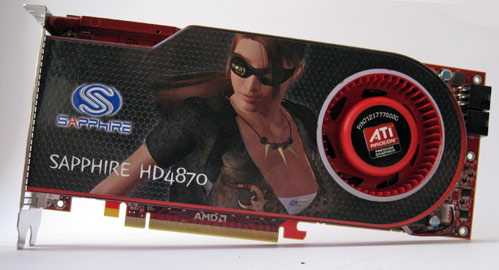
The memory is the key difference compared to the Radeon HD 4850, RV770PRO-based card. The GDDR5 will definitely confuse the hell out of you, as it actually works at 900MHz but in theory it will match the performance of 3600MHz GDDR3 memory. The answer why is quite complex, as officially GDDR5 from Qimonda works at 900MHz. A single 64Mbyte chip has 32 data lines, which gives you 32x900MHz or 26.8 Gigabits /sec of commands.
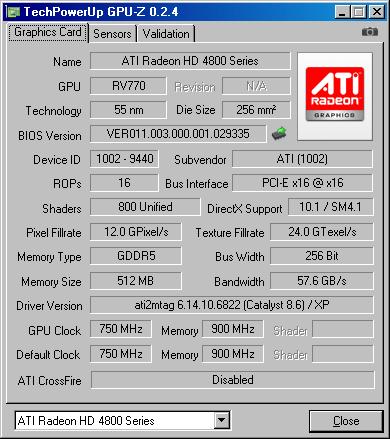
For read and write operations we have doubled that number, or 56.3GigaBits/second as the clock rate for these operations are twice higher as the command clock. With the eight parallel chips you'll find on a 512MB Radeon HD 4870 you can achieve 107.2 Gigabytes/ second, thanks to Dual Data Rate technology. If you are confused, don’t worry, so are we; but just keep in mind that Radeon HD 4870 has 107,2 GB/s of bandwidth while the GDDR3 based Radeon HD 4850 has 63.6GB/s, or some seventy percent less bandwidth.
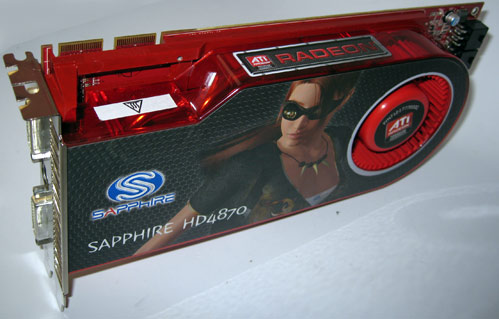
ATI's RV770XT, the chip behind Radeon HD 4870, works at 750MHz and needs a dual slot cooler, while the GDDR5 memory works at 900MHz, which is much faster than GDDR3 memory that is clocked higher. The memory bus is 256-bit wide and this is the same compared as on the old RV670 chip. The RV770XT and PRO are the same chips, but ATI clocks the better yielded chips to 750MHz, calls them XT and matches them with GDDR5, while the slower chips end up with GDDR3.
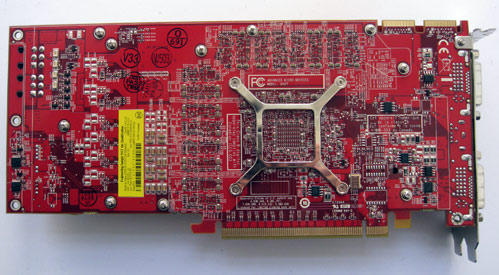
The die size is 256 square millimeters, which is a fraction compared to GT200 that measures a monstrous 578 square millimetre. The card itself looks very similar to Radeon 3870, but this time it has two six-pin power connectors and just like the HD 3870, this card has two Crossfire connectors on top of the card, two DVI outs and S video out. Naturally, the card supports PCIe 2.0 standard, but it should work just fine with PCIe 1.1 boards.
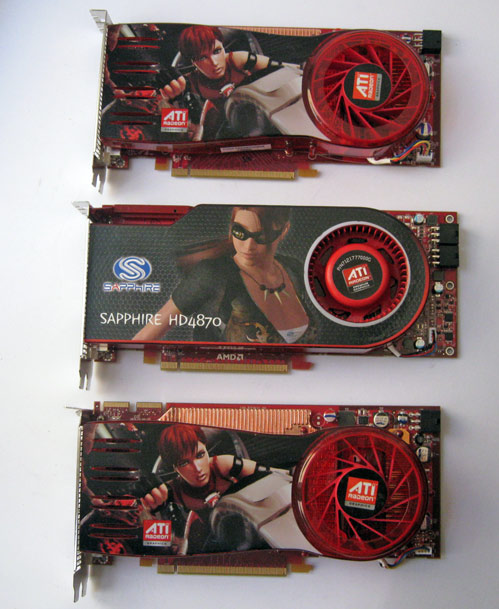
The Sapphire HD 4870 512MB card comes with 3Dmark06, Rubi ROM, Power DVD 7, Cyberlink DVD suite user manual and the version we’ve got had 2GB Sapphire branded USB stick, which is a nice touch. The retail box also comes with two 6-pin power connectors, HDTV cable, DVI to HDMI, DVI to VGA and Crossfire bridge. Sapphire's card will cost $329 in American e-tail, while it should be selling between €229 to €249 including VAT in Europe, although we already found one listed at just €216.
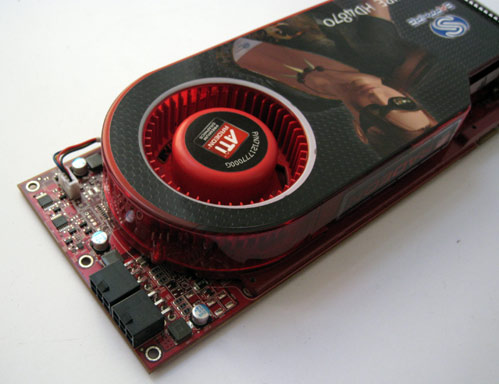
During testing, the card was heating up to 80 degrees Celsius and was stable with these temps, but at the same time it was not that noisy.
It's hard to put into words, but it was not the most quiet card we’ve heard, although it came very close. The only thing we really hate about all ATI hardware is the fact that fan rotates insanely fast when you boot a machine. We hate this, as the machine is incredibly noisy and this gets very annoying in the evenings. Does the cooler fan really need to rotate at the highest speed at startup?
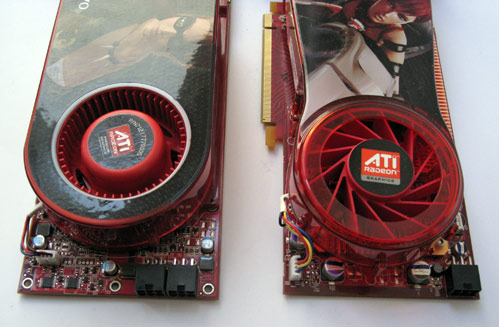
Prev Next »
